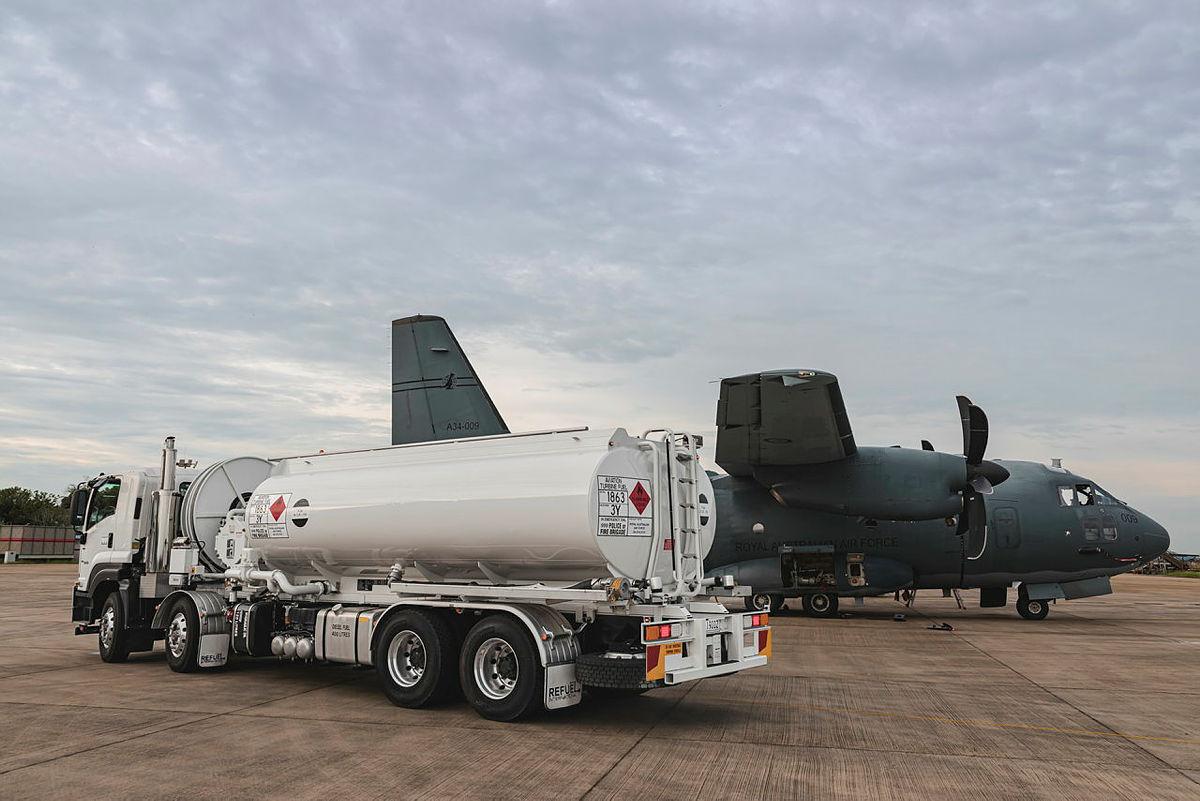Ten years ago, retired Air Vice-Marshal John Blackburn released a landmark study that revealed the fragile state of Australia’s liquid-fuel security. It highlighted the country’s sole reliance on oil-based fuels for national transport systems and described its limited and declining sovereign refining capability. It also noted that Australia, the world’s ninth largest energy producer, is reliant on imports of crude and refined petroleum products. Fuel remains critical to the nation’s military capability, as the 2020 defence strategic update recognised when it identified the requirement to expand the fuel-storage capacity at Australian Defence Force bases and facilities.
Australia has built up economic wealth and prosperity on the coat-tails of globalisation. As a nation, we have leveraged our rich natural treasures to build our economy through lucrative trade relationships with countries in the Asia–Pacific and throughout the world. If we can buy it cheaper overseas, we will. Pushed by market forces, most domestic refineries have been shut down and imports from Singapore and other countries make up 90% of our consumption—to the point where our just-in-time stocks are now on tankers making their way to Australia. Indeed, fuel security may well become Australia’s Achilles’ heel.
Based on current domestic demand and usage rates, Australia has enough fuel to last approximately 68 days, though it is less for some individual fuels. In the event of a supply shock—whether through a disruptive weather event, political unrest or a direct military threat—consumption rates could increase dramatically. According to a recent parliamentary inquiry, shipping lane disruptions are seen as a tactical response challenge to be met by alternative sourcing, rather than an issue of defence capability degradation.
Observations from the war in Ukraine have certainly highlighted the fragility of the global fuel supply chain. A conflict in the Asia–Pacific would have devastating impacts on Australia’s fuel supplies and directly affect our domestic and military capabilities.
The scale of this issue requires a paradigmatic shift in thinking about fuel supply-chain management, government spending and the security of the nation.
So, then, how much is enough? It’s difficult to tell, and there is no definitive answer to how much fuel we need to sustain domestic industry concurrently with intensified military operations. The Fuel Security Act 2021 incorporates a number of initiatives, including boosting Australia’s diesel storage, upgrading refineries, and encouraging the development of sustainable aviation fuels and biofuels. These are positive steps, but they amount to band-aid solutions to a systemic vulnerability.
The bottom line is that Australia needs to invest more in fuel security. The US recently started construction of a 300-million-litre aviation fuel storage facility for the US Air Force in Darwin valued at $270 million. Ownership is nine-tenths of the law, and I expect Australia will play second fiddle for fuel supply from these new facilities.
More sovereign Australian investment will require robust and honest supply-chain modelling to determine an acceptable level of strategic risk mitigation. In an economic climate still recovering from Covid-19, fires and floods, the pressures on the federal budget are many. For the ADF and Defence Department, increasing strategic tensions, domestic response requirements, personnel retention challenges, and ever-expanding capability scope lead to a dynamic and challenging operating environment. Any call to spend more comes with inherent trade-offs.
We myopically compromise capability when platform acquisition isn’t balanced with fuel-security measures. For example, Exercise Pitch Black is the most significant multinational large-force employment exercise hosted by Australia. It involves defence force elements from up to 16 nations, performing hundreds of missions. It ‘features a range of realistic, simulated threats which can be found in a modern battle-space environment and is an opportunity to test and improve our force integration’, and yet reported fuel-supply issues and shortages hamstring the rehearsal of significant defence capabilities throughout the exercise.
Inadequate fuel security has a direct impact on the employment and effectiveness of our defence capabilities. Prudent fuel security helps to optimise the effectiveness of our modest arsenal of defence capabilities so that they don’t end up as expensive museum pieces. This is true of all current, developing and future capabilities.
My proposed radical paradigm shift is to take a portion of every budgeted defence capital expenditure item, such as capability development and acquisition projects, and allocate those resources to national and defence-related fuel-security projects. The portion set aside will, no doubt, be the subject of much political debate and scrutiny. For the purposes of this argument, however, I propose an arbitrary 10% allocation. If we consider the $16.76 billion in capital expenditure apportioned to defence for departmental programs in the 2022–23 budget, this would result in a fuel-security allocation of $1.68 billion. Investment should be made in projects that further Australian fuel security, including the expansion and deepening of current initiatives.
Balancing the desired effects of defence capabilities with a further restricted project budget will require some lateral thinking, moving from an all-exquisite-capability mindset to more innovative and out-of-the-box thinking. This self-reliant-by-design model will not only drive large, wide-scale investment in fuel-security solutions, but will also spur innovation and creative thinking within defence capability projects.
To simply state that Australia needs more fuel security may seem flippant, but it’s a function of the wicked problem our nation is facing. The current policies and initiatives offer a step in the right direction, but a radical paradigm shift is needed to build fuel security, almost from scratch. Whatever future challenges Australia may encounter, securing a dependable and self-reliant fuel supply chain is worthy of our attention and investment for the prosperity and welfare of current and future generations.
We must act now to avoid turning fiction into reality; to quote from Mad Max 2: The Road Warrior, ‘Without fuel they were nothing. They’d built a house of straw.’


